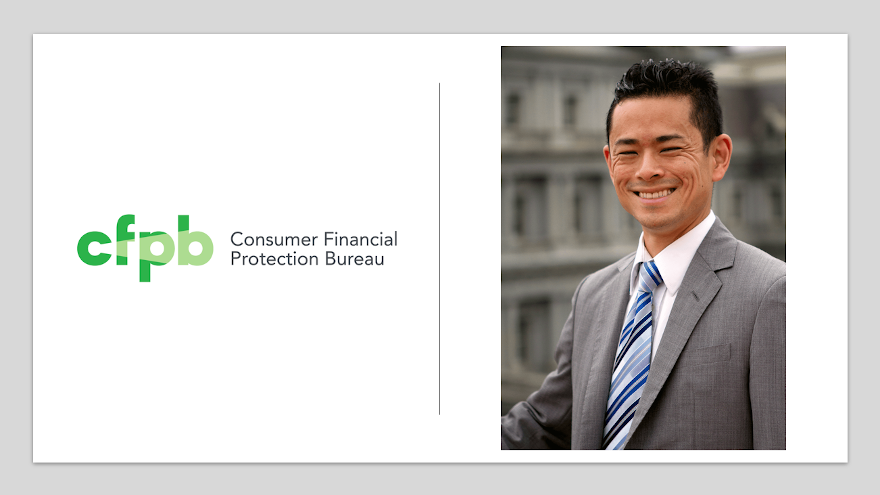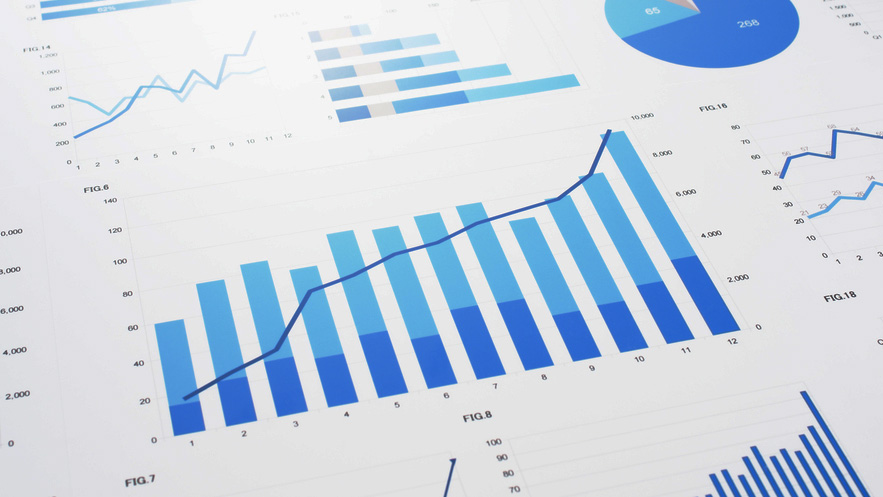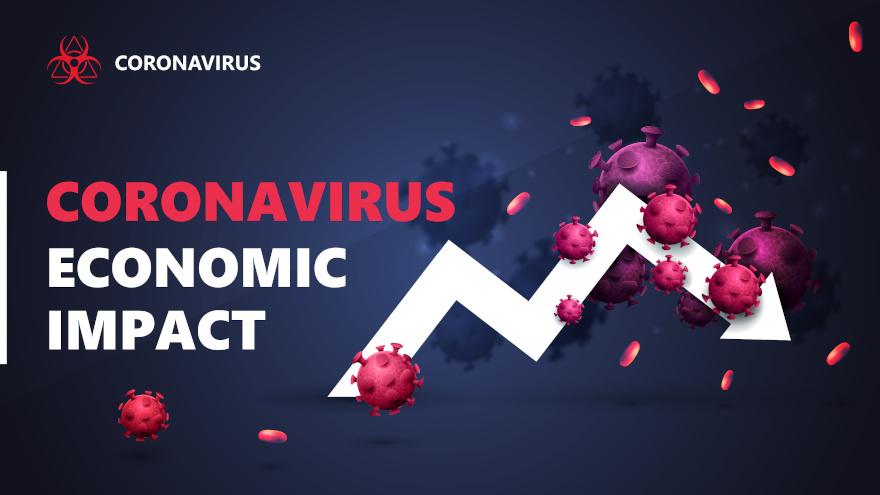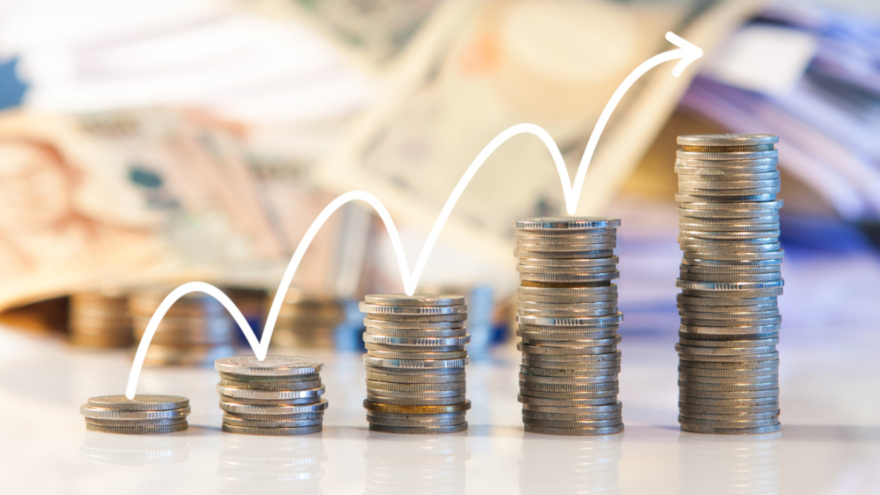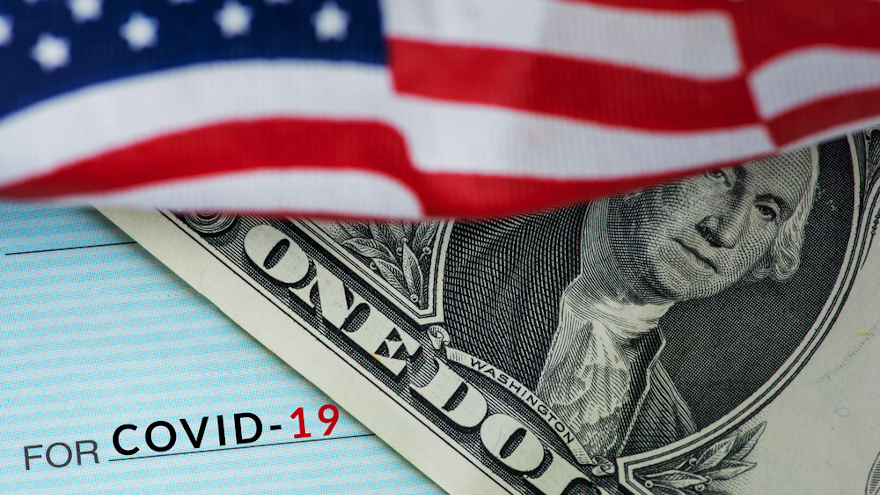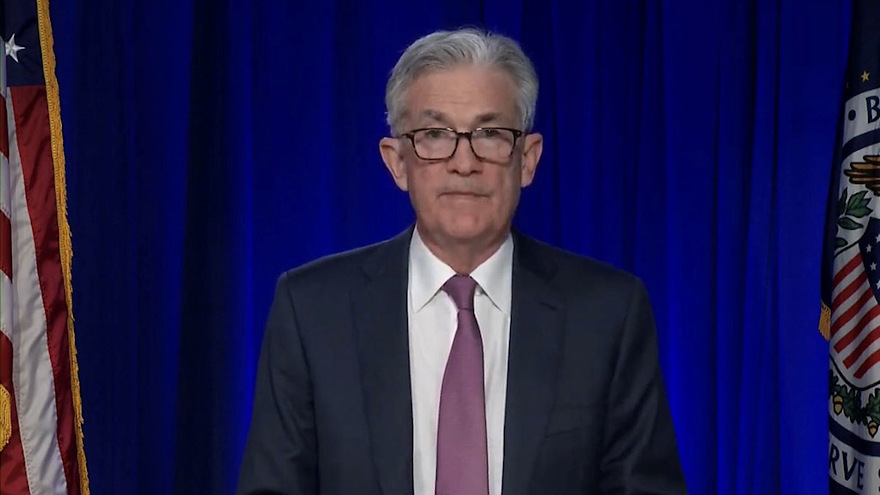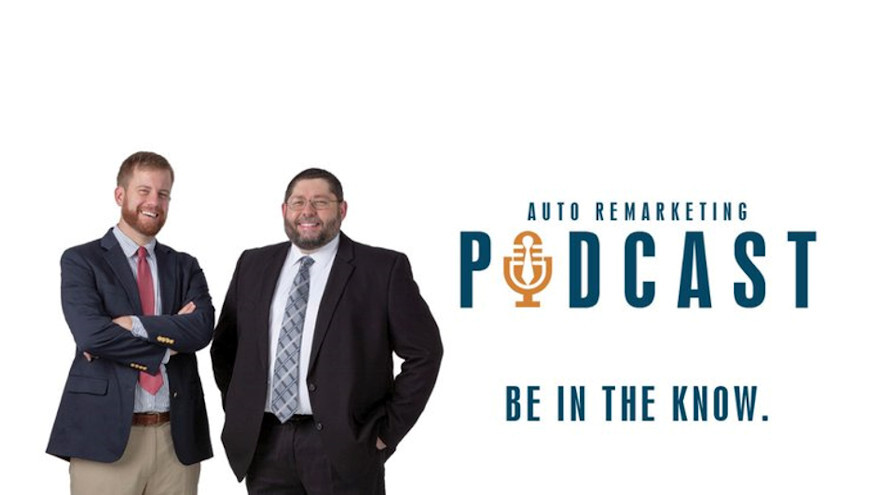Many consumers already have seen a financial boost arrive in their bank accounts courtesy of the Economic Impact Payment (EIP) funds distributed through the American Rescue Plan signed by President Biden last week.
Meanwhile, the Consumer Financial Protection Bureau (CFPB) is looking for the latest round of federal stimulus payments to make it to consumers rather than be intercepted by collectors or other finance companies seeking payment for overdue accounts.
Acting director Dave Uejio issued a statement on Wednesday regarding the matter, mentioning conversations the regulator has had with industry associations.
“The Consumer Financial Protection Bureau is squarely focused on addressing the impact of the COVID-19 pandemic on economically vulnerable consumers and is looking carefully at the stimulus payments that millions are now receiving through the American Rescue Plan,” Uejio said. “The bureau is concerned that some of those desperately needed funds will not reach consumers, and will instead be intercepted by financial institutions or debt collectors to cover overdraft fees, past-due debts, or other liabilities.
“In recent days, many financial industry trade associations in dialogue with the CFPB have said they want to work with consumers struggling in the pandemic,” he continued. “Many of these organizations have told us they have begun or soon will take proactive measures to help ensure that consumers can access the full value of their stimulus payments. If payments are seized, many financial institutions have pledged to promptly restore the funds to the people who should receive them. We appreciate these efforts, which recognize the extraordinary nature of this crisis and the extraordinary financial challenges facing so many families across the country.”
Uejio also mentioned more dialogue he intends to have as well as other potential actions while the economic recovery happens.
“I applaud the actions of our state partners, who have taken rapid action and concrete measures to protect stimulus funds,” he said. “We will remain in touch with them to better understand the effectiveness of these actions. I’ll also stay in touch with the bureau’s consumer stakeholders who provide valuable ‘voice of the consumer’ insight on problems with accessing their stimulus payments. The bureau will continue to closely monitor consumer complaint data and other information that will help us to better understand how these issues are affecting consumers.
“The bureau will stay closely engaged on this issue as the COVID relief payment rollout continues,” he went on to say.
Contract extensions for auto financing are trending down. Consumer expectations for their household financial situations are improving. President Biden just signed the newest federal stimulus package.
As individuals and industries acknowledged the first anniversary of COVID-19, analysts and experts are seeing a wide array of positive trends; ones that might help your current portfolio and future paper.
Beginning first with S&P Global Ratings, analysts there discovered that January showed extensions on auto paper in public asset-backed securities (ABS) decreased significantly relative to December.
For the public prime pools that the firm tracks, the monthly average extension rate decreased 27 basis points to 0.46% from 0.73%. And for public subprime pools, it dropped 134 basis points to 3.50% from 4.84%.
“We attribute the substantial improvement to stimulus checks that were paid in January ($600 per individual and child),” S&P Global Ratings analysts said in a news release. “These checks helped ease the financial burdens for many, thereby reducing the need for extensions. Employment levels also improved during the month, with nonfarm payroll employment increasing by 166,000.”
Even with the tremendous reduction in extension rates, S&P Global Ratings pointed out that they remained elevated relative to pre-pandemic levels recorded last January.
In the prime segment, extensions were 15% higher (0.46% versus 0.40%), while for public subprime issuances, they were 75% higher (3.50% compared with 2.00%).
“However, performance differed greatly by issuer, with many granting fewer extensions this January compared with a year ago,” analysts said.
Furthermore, S&P Global Ratings indicated the average number of full payments that have been made on contracts since their first COVID-19-related extension continues to grow. In December, analysts said they started to track the number of full payments made on contacts extended since March.
Consumer sentiment improves
Arriving this week, too, the Federal Reserve Bank of New York’s Center for Microeconomic Data released its February Survey of Consumer Expectations, which showed sharp increases in year-ahead gas and rent price growth expectations.
However, other segments of the survey showed positive trends.
For example, after remaining flat at 2% for the past seven months, the survey showed median one-year-ahead expected earnings growth increased to 2.2% in February, driven by respondents with more than a high school education. The overall median remains well below its year-ago level of 2.6%.
Analysts said mean unemployment expectations — or the average probability that the U.S. unemployment rate will be higher one year from now — decreased from 40.2% in January to 39.1% in February, falling slightly below its trailing 12-month average of 39.7%.
Also of note, the survey perceptions of credit access compared to a year ago and expectations for year-ahead credit availability both were largely unchanged in February. And the average perceived probability of missing a minimum debt payment over the next three months decreased from 10.5% in January to 10.1% in February, according to the survey, remaining below its 2020 average of 11.4%.
More stimulus funds
After the House and Senate passed the American Rescue Plan, President Biden signed it into law on Thursday. White House press secretary Jennifer Psaki said on Thursday afternoon that some individuals could see direct deposits into bank accounts as soon as this weekend.
Here’s an overview from the White House about the direct payments in the American Rescue Plan:
— For households who have already filed their income tax return for 2020, the IRS will use that information to determine eligibility and size of payments.
— For households that haven’t yet filed for 2020, the IRS will review records from 2019 to determine eligibility and size of payment. That includes those who used the “non-filer portal” for previous rounds of payments.
— For tax returns with direct deposit or bank account information, the IRS will be able to send money electronically. For those households for which Treasury cannot determine a bank account, paper checks or debit cards will be sent.
The White House then offered what the American Rescue Plan means for a typical family of four — with parents making $75,000 a year combined, and with children in school ages 8 and 5:
— That family of four will soon be getting $5,600 in direct payments, $1,400 for each parent and child.
— Because of the expanded Child Tax Credit, they will also get $2,600 more in tax credits than before.
“That’s $8,200 more in the pockets of this family as they try to weather this storm — on top of additional money in this bill to reopen schools safely, get shots in arms faster, and help those who have lost their jobs through no fault of their own,” the White House said.
Upbeat GDP forecast
Fueled in part by that federal stimulus, the first quarterly UCLA Anderson Forecast of 2021 expects robust growth for the U.S.
Following the 3.5% decline in real GDP in 2020, the national forecast called for 6.3% growth in 2021, 4.6% growth in 2022 and 2.7% growth in 2023. Forecasters said these rates of growth are considerably higher than the 2.3% rate the country averaged during the recovery from the Great Recession between 2010 and 2019.
The forecast also sees real GDP surpassing its 2019 peak by the end of the second quarter of this year and to surpass the trend it was on prior to the pandemic in early 2022.
“For the economy, a waning pandemic combined with fiscal relief means a strong year of growth in 2021 — one of the strongest years of growth in the last 60 years — followed by sustained higher growth rates in 2022 and 2023,” UCLA Anderson senior economist Leo Feler said in a news release.
“We have embarked on a once-in-a-lifetime policy experiment to test the ability of government intervention to make even deadly pandemic-sized economic shocks a short blip in our economic history,” Feler continued, also noting that governments around the world ensured a “vaccine race” by guaranteeing purchases and that U.S. policies helped keep businesses afloat and maintained employer-employee relationships.
“If the motto of the pandemic was to survive, the motto post-pandemic is to thrive, and because of the policies implemented to date, we’re in a position to have a rapid economic recovery,” he added.
“This all means we have the opportunity to test how much we can stimulate the economy and how rapidly employment can recover without overheating the economy,” Feler went on to say. “If real GDP goes above ‘potential GDP’ without generating sustained inflation, it will signal that we have been too modest in our assumptions about the productive potential of our economy … These next few years will help us discover if secular stagnation has been a myth we’ve mistakenly bought into and whether we have the capacity to grow much faster than we’ve done in decades.”
Finance company executives and managers having a sit-down meal at a restaurant now might be even more enjoyable than for just the delicious dish and social comradery. Their outstanding portfolio might be much more appetizing, too, because of the rebound the job market made in February, aided by what’s cooking in the restaurant sector.
What one expert called “stronger than anticipated,” the U.S. Bureau of Labor Statistics (BLS) reported on Friday morning that total nonfarm payroll employment rose by 379,000 in February. It meant the unemployment rate was little changed at 6.2%.
BLS officials said the labor market continued to reflect the impact of the coronavirus pandemic.
BLS officials also noted most of the job gains occurred in leisure and hospitality, with smaller gains in temporary help services, health care and social assistance, retail trade and manufacturing. They also noted employment declined in state and local government education, construction and mining.
Moments after the numbers arrived, Curt Long, chief economist and vice president of research at the National Association of Federally-Insured Credit Unions (NAFCU), offered this reaction.
“The February jobs report was stronger than anticipated, thanks to a spike in restaurant employment,” Long said. “Private payrolls grew by 465,000, and restaurants accounted for over 60% of that total.
“With vaccine distribution continuing to accelerate and with the economy in the initial stages of a reopening, the coming months should see robust gains,” Long added.
The newest BLS data arrived after the Conference Board Consumer Confidence Index improved again in February. The index currently stands at 91.3, up from 88.9 in January.
The Present Situation Index — based on consumers’ assessment of current business and labor market conditions — climbed from 85.5 to 92.0.
However, the Expectations Index — based on consumers’ short-term outlook for income, business, and labor market conditions — fell marginally from 91.2 in January to 90.8 in February.
The monthly Consumer Confidence Survey, based on a probability-design random sample, is conducted for the Conference Board by Nielsen, a leading global provider of information and analytics around what consumers buy and watch. The cutoff date for the preliminary results was Feb. 11.
Officials said the survey results did not fully capture the events surrounding the Texas power crisis nor the loosening of dining restrictions in New York City.
“After three months of consecutive declines in the Present Situation Index, consumers’ assessment of current conditions improved in February,” said Lynn Franco, senior director of economic indicators at the Conference Board. “This course reversal suggests economic growth has not slowed further.
“While the Expectations Index fell marginally in February, consumers remain cautiously optimistic, on the whole, about the outlook for the coming months. Notably, vacation intentions — particularly, plans to travel outside the U.S. and via air — saw an uptick and are poised to improve further as vaccination efforts expand,” Franco continued in another news release.
Consumers’ assessment of current conditions also improved in February, according to the Conference Board.
The percentage of consumers claiming business conditions are “good” increased from 15.8% to 16.5%, while the proportion claiming business conditions are “bad” fell from 42.4% to 39.9%.
Experts added that consumers’ assessment of the labor market also improved. The percentage of consumers saying jobs are “plentiful” increased from 20.0% to 21.9%, while those claiming jobs are “hard to get” declined from 22.5% to 21.2%.
All of that positive momentum could help the health of your outstanding portfolio, as this week Experian reported total open automotive finance balances grew 2.8% year-over-year, reaching $1.27 trillion during the fourth quarter.
America recently was under the Great Freeze of 2021, which lasted more than two weeks. Millions were without power. Businesses and schools were shuttered. Power grids strained under a brutal arctic assault. This will without a doubt negatively affect business output and the economy for the first quarter of the year, the automotive retail marketplace included.
There’s not one automotive economic forecaster — not J.D. Power, Black Book, Cox Automotive or industry analyst — that predicted that large swaths of the U.S. economy would be hampered, if not shut down, by severe winter weather during February. Despite the most detailed data analysis and astute predictions, there are always unforeseen events that will affect businesses and the economy.
This past year, hopefully, will be the biggest unforeseen event with dramatic negative social and economic effects this country will see in a several generations. A new virus spread from Asia, circled the globe and left tens of millions ill, thousands dead and economic devastation and dramatic change in its wake.
Despite unforeseen events, successful businesses use the best information available to prepare for the future. Business leaders hone the skills of their managers and employees, set goals, demand accountability, and, importantly, make adjustments when conditions change.
Market conditions dramatically changed last year, but businesses, especially those in the automotive retail sector, new and used, responded as best they could and met with some successes, according to industry analysts. U.S. car and truck sales fell to 14.4 million units in 2020 over 2019, a decline of about 15 percent. That would have been seen as disastrous in a typical year, but because of government and Federal Reserve intervention the detrimental effects were bad, but not devastating.
In fact, December sales ended the year on high note with 1.65 million new cars and trucks being sold. Used-vehicle sales, TrueCar stated, ended 2020 down just 6% from 2019 at 34.4 million. Not bad given a global pandemic with some states shuttering all retail sales completely for two months.
What happened to keep car sales occurring and dealerships afloat? Government intervention in the form of its Paycheck Protection Program, granted millions of dollars to keep employees paid and the lights on for millions of small businesses. The Federal Reserve made huge infusions of capital available to assist major corporations. In short, government, business, and the financial sector made adjustments when the unforeseen occurred.
Businesses, especially the automotive retail sector, responded by creating safer work environments. They instituted a policy of appointments rather than encouraging walk-ins. They developed protocols for disinfecting work areas and vehicle inventory. They implemented modern digital retailing policies and procedures. While many of the “online” retailing services were available, the pandemic forced dealers to adopt them far sooner than was anticipated.
The permanent effects on the auto industry include dealers and consumers who have embraced so-called digital sales. Online trade-in evaluations and e-contracting has become far more commonplace. “Digital” sales were not allowed in every city when economic shutdowns first occurred in March 2020, but once restrictions of “online” sales were lifted, the new-car industry saw a 300-400% increase, according to J.D. Power Data. Used-car retailers have been slower to adapt, but it is occurring in this sector as well.
Sales of new and used cars should improve significantly this year over 2020, again barring unforeseen circumstances. Dealers, government, and consumers are better prepared to handle the social and economic issues even as the pandemic continues. Outlooks by industry analysts look at the widespread roll out of Covid-19 vaccines, recent declines in new cases and hospitalizations, and lessons learned by citizens and their governments, have put this country in a place that is ready to get back to work at full throttle.
Government and the federal reserve will continue to support the U.S. economy and the American citizens that power it. Already the government has pumped $4 trillion in pandemic relief to businesses, state and local governments, and individuals. An additional $1.5-$1.9 trillion is expected later this spring. They are spending vast sums of money to protect the world’s largest economy that had a GDP of $21.43 trillion in 2019. In comparison, that is more than 10 percent larger than the GDPs of China and Japan combined that same year.
And that is good news for the automotive retail sector. The Internal Revenue Service recently opened up taxpayer filings for 2020 on Feb. 12. This comes on the heels of additional Stimulus payments of $600 in January. There’s a strong likelihood that taxpayers earning up to $75,000 per individual, $150,000 per couple, and dependents will receive an additional $1,400 if the new Biden Administration is able to get a $1.9 Trillion Stimulus Bill passed through Congress.
If you add up the tax refunds many Americans get for the Earned Income Tax Credit and the Child Tax Credit to the already paid and proposed direct stimulus payments, millions of American families will have received up to $13,000 by mid-April.
For the buy-here, pay-here and deep subprime finance markets, this bodes very well. BHPH customers especially don’t make impulse purchases when it comes to getting a new car. They get a new vehicle because their circumstance changes. They get a vehicle when their vehicle has died, they are adding a new family member, they get a new job and must commute further. Necessity is a key driver. And the need is always there, and now that need comes with additional wherewithal.
Inventory prices remain high. Black Book reports 2020 ended with used wholesale prices at elevated levels. With economic patterns (including the automotive market) driven by the pandemic, normal seasonal patterns (e.g. 2019 calendar year) in the wholesale market were not observed for most of the year. This is similar to 2009 at the end of the Great Recession. So far, the 2021 spring market arrived about seven weeks earlier than during a typical pre-COVID year. This is likely the result of dealers understanding that their clients will have more liquidity thanks to stimulus payments and tax refunds, so are willing to pay more at auction in anticipation of larger down payments from their clients.
So as Americans climb out of a colder and snowier winter than usual, and the lasting effects of a global pandemic, the U.S. economy, and the automotive retail industry, in particular is poised to come back strong in 2021. Unless, of course, something unforeseen occurs.
David Meyer is the president of Advantage GPS, an industry leader in the automotive telematics and analytics industry. Named one of Industry Era’s 2019 Best CEOs, he has more than 28 years of automotive retail, finance and telematics experience. He has been a dealer principal, manager, and understands the challenges and opportunities faced by today’s modern automotive retailers. Learn more about Advantage by contacting the company at (800) 553-7031, https://advantagegps.com or [email protected].
S&P Global Ratings is observing what it dubbed “generally better-than-expected loss results,” according to its latest report on the auto loan ABS market.
And analysts gave an upbeat forecast for the trends to continue this year as unemployment levels tick lower and the pandemic gradually subsides because of vaccine distribution.
“The generally better-than-expected loss results, improved employment outlook, and wide variances in extension rates across issuers led us to reduce the fixed incremental adjustment to base-case cumulative net losses that we applied to our auto loan ABS transactions last year beginning in late March,” analysts said in the report.
“In the application of our criteria, we are now factoring into our analysis issuer-specific performance data since the start of the pandemic, among other factors, to determine the degree of the COVID-19-related loss adjustment for a given transaction,” they continued.
S&P Global Ratings explained that as expected at the onset of the pandemic in March, extension rates increased significantly as finance companies sought to provide payment relief for contract holders that were unemployed due to business closures from the statewide mandated shutdowns. The firm pointed out that monthly extension rates for U.S. prime and subprime auto loan ABS peaked in April, but subsequently trended downward as statewide closures eased in May and through the summer months.
Despite the reduction in extension rates from their peak last spring, analysts acknowledged that they have yet to see delinquencies and losses increase to typical pre-COVID levels, although S&P Global Ratings noticed that they are starting to trend upward.
Analysts explained that strong delinquency and loss performance has been due to a confluence of factors that have occurred since the start of the pandemic, including enhanced unemployment benefits and stimulus checks, unprecedented levels of extensions granted by finance companies and soaring used-vehicle values.
“We are continuing to monitor how COVID-19 is affecting outstanding transactions and considering how it will impact future ones,” analysts said. “As the pandemic has intensified in recent months, we expect monthly extension rates to continue to rise, but not to the levels we saw in the spring of 2020.
“The high rates of infection have led to reduced business activity, which, in turn, has cut working hours and salaries for many of those still employed, and have kept first-time unemployment claims high (at nearly 780,000 for the week ended Jan. 30 — about 3.1 times pre-pandemic levels,” analysts continued. “Still, unemployment levels remain substantially below where they were in April (peaking at 14.7%) and we expect them to average 6.4% this year.
“Also, a potential third round of stimulus checks is currently being discussed by President Biden’s administration that, along with the stimulus check received in January and the upcoming tax refunds, could reduce the need for extensions and limit the potential increase in losses,” analysts went on to say. “We also expect used-vehicle supply to remain constrained throughout most of 2021, which could continue to support strong used-vehicle values and assist with decreasing the severity of losses on charge-offs.”
As important as those ingredients might be to the health of the auto loan ABS market, S&P Global Ratings might be putting its strongest forecasting emphasis on vaccine availability. The firm pointed out that vaccine production and inoculations are ramping up in the U.S. and throughout the world.
“Widespread immunization, which will help pave the way for a return to more normal levels of social and economic activity, looks to be achievable by most developed economies by the end of the third quarter,” analysts said. “However, some emerging markets may only be able to achieve widespread immunization by year-end or later.
“We use these assumptions about vaccine timing in assessing the economic and credit implications associated with the pandemic. As the situation evolves, we will update our assumptions and estimates accordingly,” they added.
At least one industry expert used some positive adjectives when assembling reaction after the Federal Reserve released consumer credit data for December.
The credit data arrived after a federal forecast projecting how long it might take for the U.S. job market to rebound from the pandemic.
According to data released on Friday, the Fed said that in 2020, revolving credit decreased 11.2% and nonrevolving credit increased 3.9%, leaving total consumer credit little changed.
The Fed added that consumer credit increased at a seasonally adjusted annual rate of 2.7% in the fourth quarter and at a rate of 2.8% in December.
Upon seeing that information Curt Long, the chief economist and vice president of research at the National Association of Federally Insured Credit Unions offered this assessment.
“On a seasonally-adjusted basis, consumer credit growth decelerated in December but still showed a solid gain. Revolving credit contracted once again, and has now fallen in nine of the last 10 months,” Long said. “Nonrevolving credit has surpassed its pre-pandemic level as interest rates remain at all-time lows and consumers shift spending to big-ticket items.
“Lenders have tightened standards through the pandemic, but that seems to have tapered off as the latest senior loan officer survey showed more banks reported easing standards for credit cards than tightening; a modest net amount of banks also reported easing standards on auto loans,” Long continued.
“NAFCU expects modest growth in consumer credit into the summer, followed by a more robust recovery,” he went on to say.
Long added more information specific to the credit-union market, noting that its portfolio of consumer credit increased 2.6% from a year earlier, which was above the overall growth of 0.1%.
Over the past 12 months, Long indicated that credit unions’ share of the market has risen by 0.3 percentage points to 11.8%. Meanwhile, he said banks’ share fell by 2.1 percentage points to 40.3%, and financial companies’ share ticked up by 0.4 percentage points to 13.2%.
Ahead of the Fed’s latest consumer credit data being released, the Congressional Budget Office shared its economic outlook, looking ahead as far as 2031. The outlook focused on one important element to consumers being able to use credit — having viable employment.
The CBO outlook pointed out that pandemic impact was focused on particular sectors of the economy, such as travel and hospitality, and job losses were concentrated among lower-wage workers. The CBO is projecting that the economic expansion that began last year will continue. Specifically, real (inflation-adjusted) gross domestic product (GDP) is expected to return to its pre-pandemic level during the middle of this year and to surpass its potential (that is, its maximum sustainable) level in early 2025.
In CBO’s projections, the unemployment rate gradually declines through 2026, and the number of people employed returns to its pre-pandemic level in 2024.
The CBO forecast prompted a swift reaction from new Treasury Secretary Janet Yellen, beginning a statement by saying the “CBO forecast is more evidence that we desperately need Congress to act on a rescue package.
“Last year, the economy shrunk more than any other since the end of World War II. With the growth that the CBO projects, it will be years before the country reaches full employment again,” Yellen continued.
“Then there are the more immediate concerns: Can we get the vaccine distributed quickly? Will people keep a roof over their heads? Will their unemployment benefits last until the end of the crisis? Will families go hungry? Will small businesses survive?
“All this is why we’re proposing the American Rescue Plan: So Americans can make it to the other side of this crisis and be met there by a strong, growing economy,” she went on to say.
While the number of accounts TransUnion classifies as being in some form of financial hardship status closed the year below a peak registered soon after the onset of the pandemic, the level remains notably elevated and isn’t softening at the pace analysts spotted earlier.
According to TransUnion’s latest Financial Services Monthly Industry Snapshot Report released this week, analysts indicated approximately 2.87% of accounts in the auto, credit card, mortgage or unsecured personal loan industries remained in financial hardship status at the end of December.
TransUnion pointed out the percentage of accounts in financial hardship continues to decline from a peak of 4.77% observed in May.
TransUnion’s financial hardship data includes all accommodations on file at month’s end and includes any accounts that were in accommodation before the COVID-19 pandemic. While the percentage of accounts in this status has decreased, TransUnion said the declines have slowed in recent months.
Furthermore, TransUnion consumer research has found that repayment preferences vary among surveyed consumers with loan accommodations.
For instance, analysts noted in a news release that approximately 25% of consumers want to resume regular payments and work with the finance company to extend the length of the loan. TransUnion also said that 19% of consumers want to extend the accommodation; and the credit bureau added that 17% of consumers would like to create a repayment plan to catch up while making larger payments.
“There are still hundreds of thousands of consumers in some form of financial hardship status, and the more lenders can do to understand their customers’ financial situations, the better they can assist them and build trustworthy, long-lasting relationships,” said Jason Laky, executive vice president and head of TransUnion’s financial services business.
Accounts in Financial Hardship Status Declining, but Still Elevated
|
Date/Credit Product
|
Auto Loans
|
Credit Cards
|
Mortgages
|
Personal Loans
|
|
December 2020
|
2.93%
|
2.42%
|
5.36%
|
3.36%
|
|
November 2020
|
3.22%
|
2.21%
|
5.85%
|
3.60%
|
|
October 2020
|
3.64%
|
2.14%
|
5.44%
|
3.87%
|
|
Peak Level*
|
7.21%
|
3.73%
|
7.48%
|
7.03%
|
|
March 2020
|
0.64%
|
2.15%
|
0.48%
|
1.56%
|
*Note that peak levels for auto loans and personal loans took place in June 2020 and in May 2020 for credit cards and mortgages. Source: TransUnion.
To assist finance companies with their customer relationships, TransUnion has introduced the CreditVision Acute Relief Suite.
The suite can enhance support for consumers with accommodations, allowing finance companies to develop effective customer management strategies across the account lifecycle.
TransUnion mentioned this solution also can provide consumers more opportunities to work with their lenders to ensure they can repay their loans when coming out of accommodation.
“We’ve worked with many lenders in the past six months to ensure they are identifying and supporting consumers who may need financial help,” Laky said.
“As we begin 2021, and accommodation programs begin to expire in March and April, these insights will be especially beneficial to lenders and consumers alike,” he continued.
Laky went on to mention that the CreditVision Acute Relief Suite features trended credit attributes that identify credit relationships and payment behaviors for consumers previously or currently in relief status during acute economic conditions.
Furthermore, the suite provides lenders and insurers with greater access to critical insights that improve their ability to understand how consumers and their accounts have been impacted. It includes details broken out by different credit products, the timing of when the accounts were reported in these statuses, and the balances of those accounts.
“These are challenging times that call for innovative strategies,” Laky said.
“The effective use of solutions combined with approaches already set forth by businesses and lenders will be major determining factors for enabling a thriving consumer credit market and empowering economic opportunity for consumers in 2021,” Laky added.
This week’s restart of the Paycheck Protection Program (PPP) could benefit dealerships and finance companies directly if they choose to apply for and are granted loans through this federal program.
Or PPP could provide a trickle-down effect for stores and providers whose retail installment contract holders have had their finances impacted by employers suffering because of the pandemic.
On Friday, the U.S. Small Business Administration (SBA), in consultation with the Treasury Department, announced that the Paycheck Protection Program (PPP) will re-open the week for new borrowers and certain existing PPP borrowers.
To promote access to capital, officials said initially only community financial institutions will be able to make first draw PPP Loans on Monday and second draw PPP Loans on Wednesday. The PPP will open to all participating lenders shortly thereafter, according to the federal agenices.
Updated PPP guidance outlining program changes to enhance its effectiveness and accessibility was released last Wednesday in accordance with the Economic Aid to Hard-Hit Small Businesses, Non-Profits, and Venues Act.
The SBA said this round of the PPP continues to prioritize millions of Americans employed by small businesses by authorizing up to $284 billion toward job retention and certain other expenses through March 31 and by allowing certain existing PPP borrowers to apply for a second draw PPP Loan.
“The historically successful Paycheck Protection Program served as an economic lifeline to millions of small businesses and their employees when they needed it most,” SBA administrator Jovita Carranza said in a news release.
“Today’s guidance builds on the success of the program and adapts to the changing needs of small business owners by providing targeted relief and a simpler forgiveness process to ensure their path to recovery.”
Key PPP updates include:
• PPP borrowers can set their PPP loan’s covered period to be any length between eight and 24 weeks to best meet their business needs
• PPP loans will cover additional expenses, including operations expenditures, property damage costs, supplier costs, and worker protection expenditures
• The program’s eligibility is expanded to include 501(c)(6)s, housing cooperatives, direct marketing organizations, among other types of organizations
• The PPP provides greater flexibility for seasonal employees
• Certain existing PPP borrowers can request to modify their first draw PPP loan amount
• Certain existing PPP borrowers are now eligible to apply for a second draw PPP loan.
Officials indicated a borrower is generally eligible for a second draw PPP Loan if the borrower:
• Previously received a First Draw PPP Loan and will or has used the full amount only for authorized uses
• Has no more than 300 employees
• Can demonstrate at least a 25% reduction in gross receipts between comparable quarters in 2019 and 2020.
“The Paycheck Protection Program has successfully provided 5.2 million loans worth $525 billion to America’s small businesses, supporting more than 51 million jobs,” Treasury Secretary Steven Mnuchin said.
“This updated guidance enhances the PPP’s targeted relief to small businesses most impacted by COVID-19,” Mnuchin continued. “We are committed to implementing this round of PPP quickly to continue supporting American small businesses and their workers.”
Consumer Bankers Association president and chief executive officer Richard Hunt issued the following statement about the PPP reopening:
“Banks are prepared once again to assist millions of small businesses through this next round of PPP when the portal is accessible to CBA members, likely not until the week of Jan. 18 due to the staggered reopening.
“Within the span of a few months, thousands of bankers worked around the clock to put the full force of the industry into supporting businesses on Main Street and as a result of those tireless efforts distributed decades worth of small business loans in just a matter of months. Some banks dedicating more than a third of their entire workforce to the operation and virtually every bank participating worked literally 24/7 in shifts and at home, to process applications and deliver much-needed assistance, overcoming crippling technical issues and unclear, missing and ever-evolving guidance throughout the program.
“CBA member banks started preparing for this next round of PPP more than a month ago and appreciate SBA issuing guidance before reopening the portal. Major changes, however, were made to the program’s operations making this new round much more than a simple, straight-forward reboot. Banks, having received some initial guidance and still awaiting other key details, are currently being forced to rework the systems and technology used during the first two rounds of PPP loans.
“The banking industry as well as SBA have a shared goal of making this process run smoother than the initial round of PPP and we are just as committed now as we were last year to helping every small business in need receive the necessary relief to survive the economic effects of this pandemic.”
Finance companies likely remember what happened during the Great Recession 12 years ago when the credit market seized up as bad a car engine without oil.
The Federal Reserve reiterated the significant steps it’s taking to ensure finance companies have the raw material to keep their portfolios growing. But the pace providers might be buying paper still looks a bit uncertain.
Fed chair Jerome Powell made public comments on Wednesday following the Federal Open Market Committee voting unanimously to leave interest rates unchanged.
“The Federal Reserve has also been taking broad and forceful actions to more directly support the flow of credit in the economy for households, for businesses large and small and for state and local governments. Preserving the flow of credit is essential for mitigating damage to the economy and promoting a robust recovery,” Powell said during his opening statement of Wednesday’s press conference.
“Many of our programs rely on emergency lending powers that require the support of the Treasury Department and are available only in very unusual circumstances, such as those we find ourselves in today. These programs serve as a backstop to key credit markets and have helped to restore the flow of credit from private lenders through normal channels,” Powell continued. “We have deployed these lending powers to an unprecedented extent, enabled in large part by financial backing and support from Congress and the Treasury.
“Although funds from the CARES Act will not be available to support new loans or new purchases of assets after Dec. 31, the Treasury could authorize support for emerging lending facilities, if needed, through the Exchange Stabilization Fund. When the time comes, after the crisis has passed, we will put these emergency tools back in the box,” he went on to say.
Cox Automotive chief economist Jonathan Smoke offered his latest assessment later on Wednesday through a blog post titled, “The Fed Will Keep Rates Low, But That Alone Won’t Sell Cars.”
Smoke pointed out that the 10-year U.S. Treasury yield ticked up this week, approaching the highest level he’s seen during the pandemic. He also mentioned that mortgages and auto financing rates have not followed Treasury’s path, meaning that providers are keeping their rates lower despite the underlying yields being higher.
“Yet despite these better conditions, we are not seeing auto demand respond,” Smoke said. “November saw a notable softening in sales, especially in the back half of the month as the third wave of COVID-19 grew. Consumer sentiment has also declined since October as conditions worsened.
“The Fed’s actions may not influence much in the near term as attention focuses more on stimulus, the initial distribution of vaccines and when we see signs that this third wave of the pandemic has passed its peak. The Fed is keeping rates low and credit broadly available, but this alone will not keep Americans buying,” Smoke added.
Meanwhile, Powell acknowledged the points Smoke made as well as the conundrum finance companies face when trying to form strategy for 2021.
“As we have emphasized throughout the pandemic, the outlook for the economy is extraordinarily uncertain and will depend in large part on the course of the virus. Recent news on vaccines has been very positive. However, significant challenges and uncertainties remain with regard to the timing, production, and distribution of vaccines, as well as their efficacy across different groups. It remains difficult to assess the timing and scope of the economic implications of these developments,” Powell said.
“The ongoing surge in new COVID-19 cases, both here in the United States and abroad, is particularly concerning, and the next few months are likely to be very challenging,” he added. “All of us have a role to play in our nation’s response to the pandemic. Following the advice of public health professionals to keep appropriate social distances and to wear masks in public will help get the economy back to full strength. A full economic recovery is unlikely until people are confident that it is safe to reengage in a broad range of activities.”
And among those activities could be acquiring a new or used vehicle with some kind of financing attached.
Looking ahead to 2021, Edmunds analysts also noted that there are still uncertainties ahead, but they remain confident that industry sales will continue at a steady pace without a dramatic decline like the one seen at the outset of the pandemic.
“Even if we face another wave of retail shutdowns, the good news is that dealers are far better prepared now for selling virtually than ever before,” Edmunds executive director of insights Jessica Caldwell said in a news release distributed on Thursday. “And vaccines on the way should only help keep consumer confidence high.”
AUL Corp. senior vice president of agency and dealer sales Paul McCarthy makes his debut on the podcast to describe how dealerships have pivoted their F&I marketing and presentations in light of the pandemic’s impact on vehicle sales.
McCarthy also shared some details about what the company plans to offer in 2021.
To listen to the entire conversation, click on the link available below, or visit the Auto Remarketing Podcast page.
Download and subscribe to the Auto Remarketing Podcast on iTunes or on Google Play.

